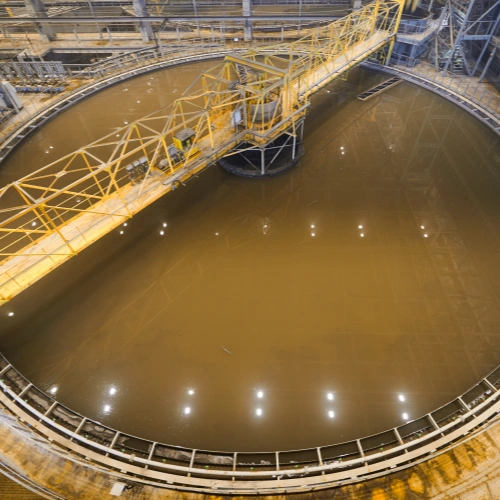Using UNS S32205 in Paper & Pulp Mills: Benefits, Applications, and Considerations
Material selection plays a crucial role in the efficiency and longevity of equipment in paper and pulp mills. These mills face challenging environments that involve aggressive chemicals, high temperatures, and constant mechanical stress. UNS S32205, a type of duplex stainless steel, offers an ideal solution due to its excellent corrosion resistance, strength, and durability. In this article, we will explore why UNS S32205 is an excellent choice for paper and pulp mills, covering its key properties, applications, and considerations.

What is UNS S32205?
UNS S32205 is a duplex stainless steel alloy, which combines the best of both austenitic and ferritic microstructures. This unique combination results in a material that offers superior strength and corrosion resistance, making it highly suited for industrial applications exposed to harsh conditions, such as those in paper and pulp mills.
Material Composition
UNS S32205 contains:
Chromium (22%): Provides exceptional corrosion resistance, especially against rust and acid.
Nickel (5-6%): Enhances the material’s ability to resist oxidation and improves its mechanical properties.
Molybdenum (3%): Boosts resistance to corrosion, particularly in chloride environments.
Iron: The remaining composition, contributing to the alloy’s strength and flexibility.
Key Properties
Corrosion Resistance: UNS S32205 resists both pitting and crevice corrosion, especially in environments rich in chloride, such as those in paper mills.
Strength: It has a higher yield strength than austenitic stainless steels, making it ideal for high-stress applications.
Temperature Resistance: The alloy retains its strength even under elevated temperatures, which is essential in many pulp mill operations.
Fatigue Resistance: Its enhanced fatigue resistance helps extend the lifespan of equipment in constant use.
These properties make UNS S32205 a highly durable material in demanding environments, where corrosion, heat, and mechanical stress are common.
Challenges in Paper & Pulp Mills
The paper and pulp industry is notorious for its harsh operating conditions. Equipment must endure a combination of corrosive chemicals, high temperatures, and mechanical stress. The following are some of the primary challenges faced in this sector:
Corrosive Environment
Paper mills frequently use chemicals such as bleaching agents and acids, creating a highly corrosive environment for machinery and equipment. The constant exposure to these chemicals accelerates the degradation of materials, leading to costly repairs and replacements.
High-Temperature Operations
Many pulp mill processes, including pulping and chemical treatment, operate at elevated temperatures. Materials used in this environment must maintain their strength and performance despite constant thermal exposure.
Mechanical Wear
The abrasive nature of pulp and paper slurries leads to significant wear and tear on equipment such as pumps and valves. Continuous abrasion can cause rapid degradation of parts, making regular maintenance essential.
Fatigue and Stress
Constant mechanical stress on equipment can lead to fatigue, potentially causing failure. In an industry where downtime is costly, ensuring equipment durability is critical.
Why UNS S32205 is Ideal for Paper & Pulp Mills
Given the demanding conditions in paper and pulp mills, it is crucial to choose a material that can withstand the combination of chemical exposure, high temperatures, and mechanical stress. UNS S32205 offers several advantages in these areas:
Corrosion Resistance
UNS S32205 excels in resisting chloride-induced stress corrosion cracking (SCC), which is common in paper mills. Additionally, its high resistance to pitting and crevice corrosion ensures that equipment remains intact even in aggressive environments, such as chemical processing and water treatment areas.
Strength and Durability
UNS S32205 has a higher yield strength compared to austenitic stainless steels, which means it can withstand greater stresses without deformation. This makes it particularly useful in high-pressure environments or applications involving mechanical wear and tear.
Cost Efficiency
While UNS S32205 may have a higher initial cost, its superior performance leads to reduced maintenance costs and longer service life, making it a cost-effective solution over time. Fewer repairs and replacements translate to significant savings in the long run.
Versatility
This alloy can be used in various applications across the mill, such as pipes, heat exchangers, pumps, and chemical processing equipment. Its adaptability simplifies sourcing and inventory management, as fewer materials are needed for diverse applications.
Key Applications of UNS S32205 in Paper & Pulp Mills
UNS S32205’s superior properties make it an ideal material for several critical applications in paper and pulp mills:
Piping and Tubing
Piping systems in paper mills transport aggressive chemicals and corrosive liquids. UNS S32205’s high resistance to corrosion makes it a reliable choice for ensuring the longevity of these systems.
Heat Exchangers
In pulp mills, heat exchangers are essential for regulating temperature during chemical treatments. UNS S32205 performs well under high-temperature conditions, maintaining efficiency and durability over time.
Pumps and Valves
The mechanical wear experienced by pumps and valves in paper mills requires materials that can resist abrasion. UNS S32205’s strength and corrosion resistance make it an ideal material for these components, ensuring long-term functionality with reduced downtime.
Chemical Processing Equipment
Due to its resistance to corrosive chemicals such as bleaching agents and acids, UNS S32205 is commonly used in chemical processing equipment like tanks, vessels, and reaction chambers.
Advantages of Using UNS S32205 in Paper & Pulp Mills
Using UNS S32205 in paper and pulp mills provides several clear advantages:
Increased Equipment Lifespan
The superior corrosion resistance of UNS S32205 significantly extends the life of equipment, even in corrosive environments. By reducing the frequency of repairs and part replacements, mills can operate more efficiently and with fewer interruptions.
Lower Maintenance Costs
Due to its durability and resistance to wear, the need for frequent maintenance is minimized. Over time, this results in considerable savings, making UNS S32205 a smart investment.
Improved Safety
The enhanced durability of UNS S32205 reduces the likelihood of equipment failures, which can be dangerous in high-stress environments. This increased reliability helps improve workplace safety.
Enhanced Operational Efficiency
With fewer breakdowns and repairs, mills can experience increased uptime, leading to higher productivity and efficiency.
Considerations When Using UNS S32205
While UNS S32205 offers many benefits, there are some considerations to keep in mind:
Cost vs. Benefit
Although the initial cost of UNS S32205 may be higher than other materials, the long-term benefits of reduced maintenance and downtime justify the investment. For paper mills that require high-performance materials, this cost is often offset by the extended service life and lower overall operating costs.
Welding Challenges
Welding duplex stainless steels, including UNS S32205. requires specialized techniques to avoid issues such as hydrogen-induced cracking. Proper welding procedures are essential to ensure the integrity of the material.
Performance Limitations
While UNS S32205 excels in many environments, it may not be suitable for extremely high temperatures or certain highly acidic environments. It is important to assess the specific conditions in your mill before choosing UNS S32205 for particular applications.
UNS S32205 is an excellent choice for paper and pulp mills, offering a combination of corrosion resistance, strength, and durability that is unmatched by many other materials. Its ability to withstand harsh conditions such as chemical exposure, high temperatures, and mechanical wear makes it an ideal material for a wide range of applications in the industry. By investing in UNS S32205. mills can reduce maintenance costs, extend equipment lifespans, and improve operational efficiency.
For more information on how UNS S32205 can benefit your mill, contact us today!
